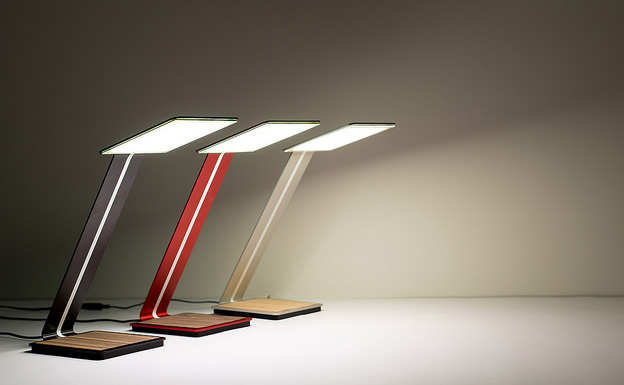aerelight™ – the world’s first organic light-emitting diode lamp based on breakthrough research from U of T Materials Science & Engineering
[sharexy]

Photo: aerelight™ – the world’s first consumer-ready OLED lamp by U of T Engineering alumni
September 26, 2014
Organic LEDs – it’s the next-generation in energy-efficient lighting technology made of readily available, non-toxic, carbon-based materials. While we’ve seen this technology in certain high-end smartphones and premium flat-panel displays, aerelight™ marks the first consumer-ready, indoor OLED lighting product ever made. And, it’s built by U of T Engineering alumni.
“OLEDs have many unique characteristics that make it the ideal light source of the future, but potential growth has been stifled by the high manufacturing cost barrier,” said alumnus Dr. Michael G. Helander (EngSci 0T7, MSE PhD 1T2), co-founder and president of OTI Lumionics – the start-up company that produces aerelight™. “For the last few years, we have been working on making OLED technology more accessible to new markets and product applications. aerelight™ is built to accentuate the unique and ultra-thin profile of OLED lighting, and is the first of many applications of this technology from our team.”
“For the last few years, we have been working on making OLED technology more accessible to new markets and product applications. (This) is the first of many applications of this technology from our team.”

Photo (L to R): Zhibin Wang, Professor Zheng-Hong Lu, and Michael Helander hold the initial versions their single chlorine atom layer-enabled OLEDs in 2011
While OLEDs were not invented at U of T, it was Dr. Helander’s doctoral research in the Department of Materials Science & Engineering (MSE) that led to their ability to make this technology accessible. During his PhD studies, he and his colleague, Dr. Zhibin Wang (MSE PhD 1T2), along with their supervisor Professor Zheng-Hong Lu, made a significant breakthrough in OLED technology. They used a single atom-thick layer of chlorine to simplify the device’s internal structure while achieving high-brightness and high-efficiency. This work was published in the leading journal, Science, and later led to the launch of OTI Lumionics, which has garnered notable investors including ATI Technologies founder and U of T Rotman Creative Destruction Lab director Lee Ka Lau and former Rotman School of Business dean Roger Martin.

Photo: U of T Engineering alumni abound – OTI Lumionics president Dr. Michael Helander (EngSci 0T7, MSE PhD 1T2), senior product designer Ray Kwa (EngSci 0T0+PEY), and designer Colin Merkel (EngSci 1T3) each holding an aerelight™ (photo: OTI Lumionics)
“This is a great example of how new materials like OLEDs can be showcased in a product that represents a paradigm shift in indoor lighting and sustainable technologies,” said Professor Jun Nogami, Chair of the U of T Department of Materials Science & Engineering. “Congratulations to Michael and Zhibin on their success in commercializing their breakthrough research, and for continuing to exemplify the excellence for which our alumni are internationally renowned.”
Media & Related Links
Contact
Luke Y. H. Ng, External Relations Officer
T: 416.946.3211 | E: lukeyh.ng@utoronto.ca